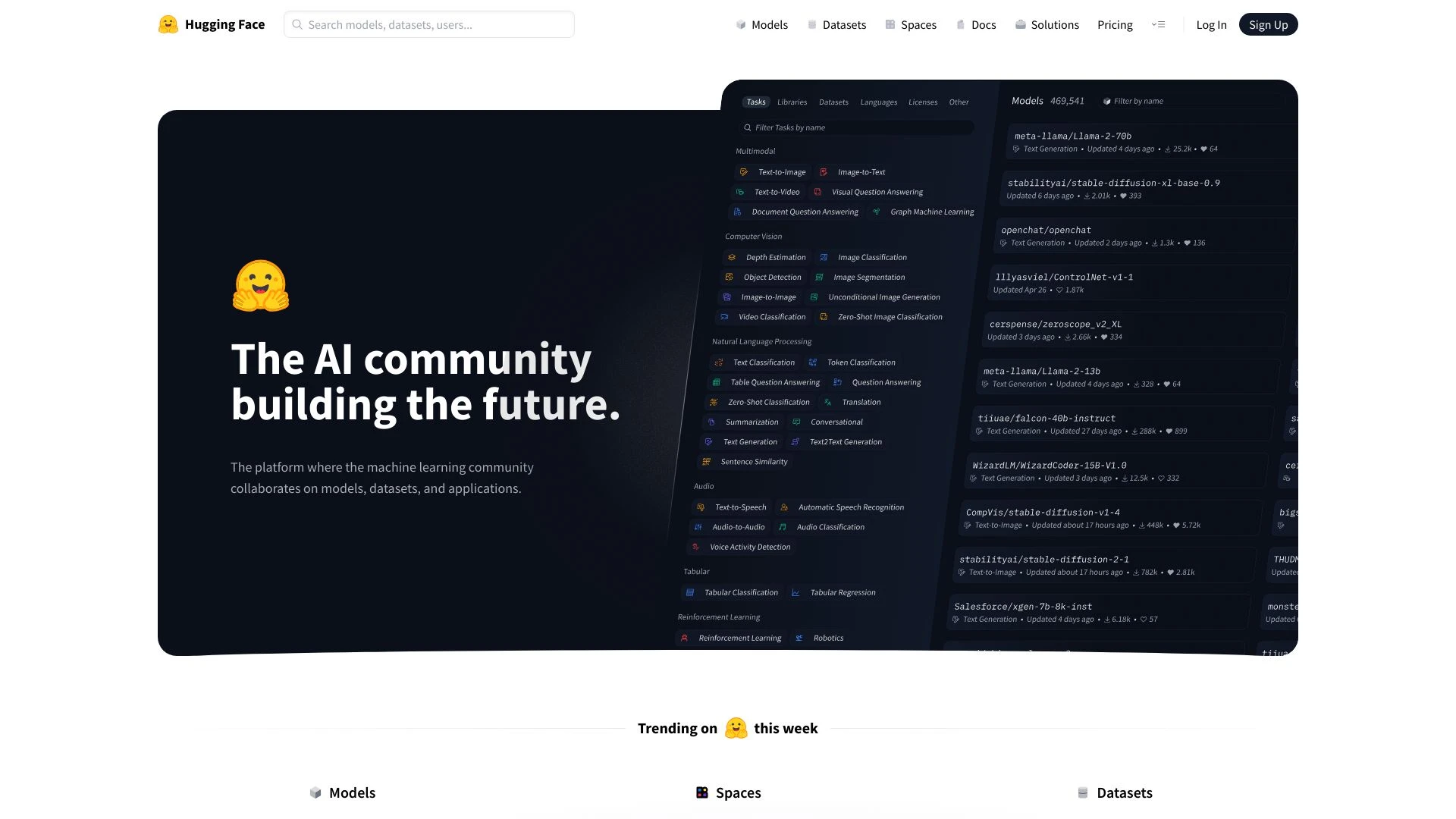Hugging Face versus AI Hugging
Hugging Face, launched in 2016, focuses on natural language processing with its Transformers library, targeting developers and researchers. AI Hugging, a newer platform, emphasizes democratizing AI access to a broader audience, including businesses and enthusiasts. Both aim to simplify AI deployment but differ in audience scope and tool offerings.


Hugging Face
Ideal For
Building and sharing AI models
Working on collaborative research projects
Contributing to open-source datasets
Developing machine learning applications
Key Strengths
Vibrant community engagement
Extensive resources for learning
Constant updates and improvements
Core Features
Collaboration on machine learning models
Access to diverse datasets
Community-driven application development
User-friendly interface
Open-source resources
AI Hugging
Ideal For
Create heartfelt hug videos for personal moments
Share emotional animations on social media
Enhance digital storytelling with animated visuals
Use in marketing campaigns for relatable content
Key Strengths
Transforms static images into dynamic animations
Easy to use with no video editing skills required
Provides customizable options for unique outputs
Core Features
Photo to Video conversion for hugging animations
Text to Video creation from simple text inputs
User-friendly interface requiring no video editing skills
Customizable animation styles and ambiance
Quick generation of personalized hugging videos.
Popularity
At a Glance
Hugging Face excels in extensive NLP models and community support, while AI Hugging focuses on user-friendly tools and integration for businesses. Key differences include Hugging Face’s model library versus AI Hugging’s customization options. Pros for Hugging Face: robust resources, active community. Cons: steeper learning curve. Pros for AI Hugging: ease of use, better for non-tech users. Cons: limited model variety. Recommend Hugging Face for researchers; AI Hugging for enterprises.
Pricing and Subscription Plans
Hugging Face offers a range of pricing tiers, starting with a free plan for individual developers, scaling up to enterprise solutions with custom pricing based on usage. AI Hugging typically provides more straightforward plans, often with lower entry costs for small businesses, but may lack advanced features. For startups, Hugging Face is cost-effective due to rich model access. In contrast, AI Hugging’s simpler structure suits smaller teams but may limit scalability.
Performance Metrics
Hugging Face excels in natural language processing with high accuracy, speed, and reliability benchmarks, particularly for transformer models. AI Hugging, while innovative, may lag in extensive model support. Scenarios favoring Hugging Face include large-scale deployments, while AI Hugging can perform better in niche applications or specific domains.
User Experience
Hugging Face offers a clean, intuitive interface with straightforward navigation, ideal for developers. Its extensive documentation supports user needs but may require a learning curve for beginners. In contrast, AI Hugging provides a more simplified UI, enhancing customizability for casual users, but lacks depth in resources. Both platforms prioritize user support, yet Hugging Face excels with comprehensive tutorials, fostering a better overall experience for advanced users.
Integrations and Compatibility
Hugging Face integrates with major platforms like TensorFlow, PyTorch, and Jupyter Notebooks, enhancing ML workflows. AI Hugging supports tools like Slack, Google Drive, and Zapier, creating seamless task automation. Both offer strong API support for third-party app integration.
Limitations and Drawbacks
Hugging Face faces limitations in model size, computational demands, and limited customization for specific tasks. AI Hugging often struggles with integration and real-time processing. Workarounds include utilizing smaller models and optimizing APIs for better performance.